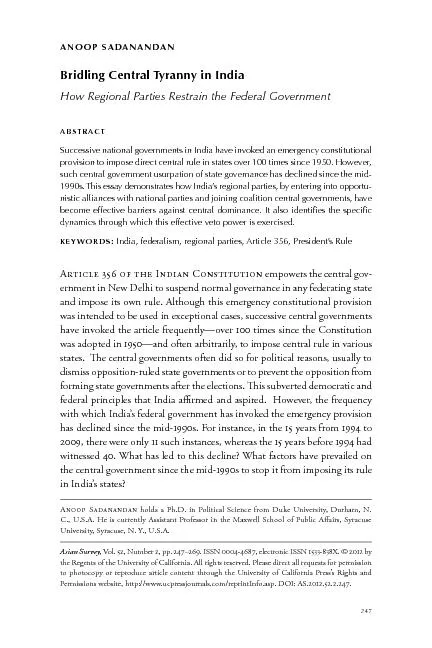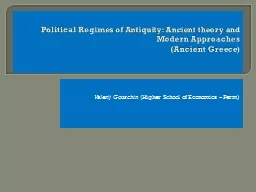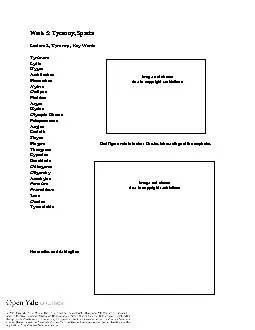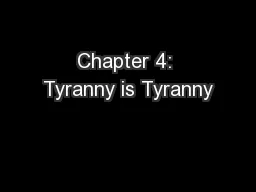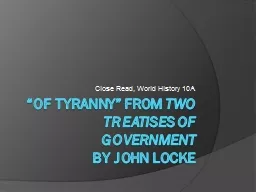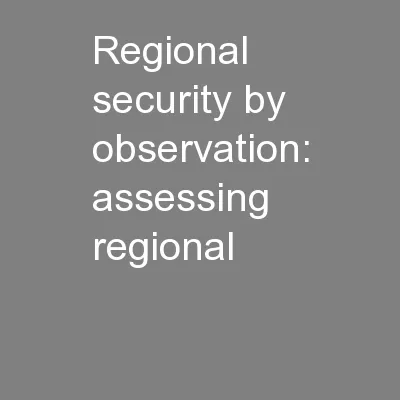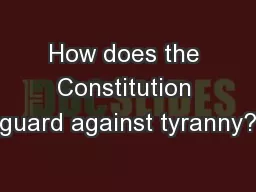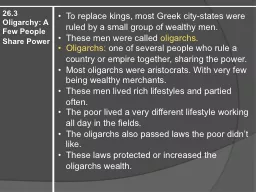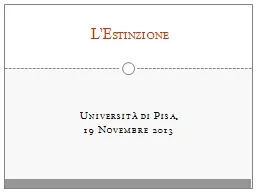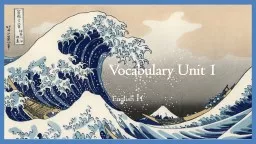PDF-247ANOOP SADANANDANBridling Central Tyranny in IndiaHow Regional Parti
Author : olivia-moreira | Published Date : 2016-05-16
A S holds a PhD in Political Science from Duke University Durham N C USA He is currently Assistant Professor in the Maxwell School of Public Aairs Syracuse University
Presentation Embed Code
Download Presentation
Download Presentation The PPT/PDF document "247ANOOP SADANANDANBridling Central Tyra..." is the property of its rightful owner. Permission is granted to download and print the materials on this website for personal, non-commercial use only, and to display it on your personal computer provided you do not modify the materials and that you retain all copyright notices contained in the materials. By downloading content from our website, you accept the terms of this agreement.
247ANOOP SADANANDANBridling Central Tyranny in IndiaHow Regional Parti: Transcript
Download Rules Of Document
"247ANOOP SADANANDANBridling Central Tyranny in IndiaHow Regional Parti"The content belongs to its owner. You may download and print it for personal use, without modification, and keep all copyright notices. By downloading, you agree to these terms.
Related Documents

